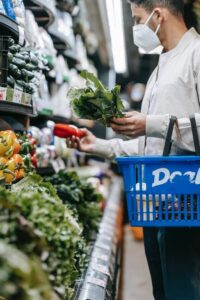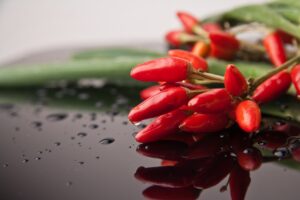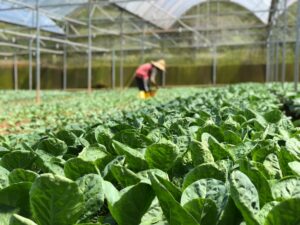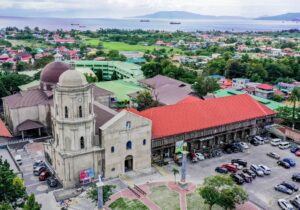(Part 3 of 3. You may read Part 1 here and Part 2 here.)
What we have described about the Kabalikat Sa Kabuhayan (KSK) is no longer at the realm of pure theory but has actually been implemented in a good number of LGU units. Among the pioneering provinces was Bataan, under the leadership of the Garcia clan which has demonstrated that a dynasty is not necessarily politically undesirable. From my long-term studies of Philippine regions, I have always found Bataan to be at the top of development efforts, as reflected by its high ranking in the Human Development Index as reported by the Philippine Statistical Authority.

As one can read on the website of the SM Foundation, a case in point was the Batch 157 of KSK held in Dinalupihan, Bataan. Under KSK, some 100 Bataan farmers were provided with training on modern farming technologies, with a focus on high-value crop production that would help them produce and sustain bountiful harvests. The assistance goes beyond production. It must always be kept in mind that “agribusiness” goes beyond farming, comprising the whole value chain until the product reaches the market. The farmer-graduates are also provided with market linkages to help in boosting their social enterprises which in turn provide economic opportunities in their respective areas. Among other outlets are the SM Markets in Dinalupihan, Bataan.
The training the farmers get in the KSK program goes beyond technical skills and expertise. They are also taught values and principles which they may use as they go along and continue pursuing their aspirations in life. Included in the program is the imparting of the 14 Life Principles of the Founder of the SM Group, Tatang Henry Sy, Sr.
The case in Dinalupihan illustrates the advantages of getting values-oriented business groups like the SM group to partner with similarly motivated government agencies like the Departments of Social Welfare and Development (DSWD), Agriculture (DA), and Trade and Industry (DTI). It was Dinalupihan Mayor Gila Garcia who put all the main actors together. Mayor Garcia vowed to provide each production group with capital of P100,000 to sustain the program and help the province to attain its goal of being the modern “agropolis” of Central Luzon in the very near future.
This concrete example shows how important it is for the LGU heads under the new Administration of President Marcos Jr. to heed the advice of Secretary of Finance Benjamin Diokno to use a substantial part of what they will receive under the Mandanas-Garcia ruling to support agricultural productivity drives like the KSK. With a reasonably limited budget, much can be accomplished in the short run to address the expected food shortage in 2022 and 2023 resulting from the global food crisis.

The Dinalupihan experience also illustrates that the KSK can address two important objectives at the same time: to increase the supply of food and to reduce poverty among the marginalized. Indigenous tribal members were among those graduating farmers in the SM Foundation’s 157th KSK batch. Before the training program, the Aetas planted vegetables and root crops only during the rainy season as the uplands are devoid of water sources during the dry season. With the greenhouse technology that was taught to them, they were able to plant high-value crops like honeydew melon, bitter gourd, upo (bottle gourd), kundol (wax gourd), sili (chili), squash and many more. Other than the Aetas, other marginalized households benefited when the DSWD, for its part, gave the names of 43 beneficiaries of its 4Ps (Pantawid Pamilyang Pilipino Program) to be included in the list of the trainees.
The DTI had its own role to play. The then DTI provincial director, Nelin Cabahug, said “this is the fruition of our vision for an inclusive growth for the country, by involving all sectors, the indigenous tribes especially, in our development efforts through productive projects like high-value crop farming, even as DTI will continue building their capacity to gain value for their produce through processing to get more revenues from their efforts.”
A significant increase in the supply of high-value crops, with the help of DTI and other private participants, can lead to microentrepreneurs going into food processing. This is where the GoNegosyo initiative of Joey Concepcion can come in. This example set by Bataan can be readily replicated in provinces where there are also indigenous tribes residing in hilly places like Antipolo (the Dumagats) and the island of Mindoro (the Mangyans), not to mention the whole of Mindanao.

The KSK program can also be implemented in highly urbanized areas like some component cities of the National Capital Region. In a conversation with the newly re-elected Mayor of Pasig City, Vico Sotto—already a role model of aspiring young politicians—he told me that he intends to convert every empty lot (and even buildings) into a vegetable garden. The advantage of urban gardening is that you significantly reduce transport costs, especially in these times of very high fuel prices.
To get an idea of what can be done in Pasig without too much delay—again with some funding from the proceeds of the Mandanas-Garcia ruling—I quote here excerpts of a letter of the CEO of Harbest, Arsenio Barcelona, to Mayor Sotto: “I am very happy to know about your ongoing program to encourage more residents to plant vegetables and short-term fruits. We will be glad to guide and support your edible gardening program and incorporate this into our ongoing promotion for urban farming. In fact, the Pasig Greening Program staff had been our suki (regular customer) for seeds, fertilizers, growing medium, pots, and other supplies. You may visit us at www.harbest.com.ph. We will be glad to show you our urban greenhouse nursery for vegetable seedlings and potted herbs. We also have a 40 sq.m. roof deck edible garden on our 4th floor.”
“It will be good to establish a Pasig City Edible Gardening Center where residents, barangay personnel, and the youth can be trained by your trainors whom we will be the ones to train. You can also have an Edible Garden Supplies Hub to sell seeds, fertilizers, organic pest and disease control products, pots, and reading materials. A seminar room at City Hall can be used for training classes. Harbest will be glad to support your program. We have been training farmers all over the Philippines for more than 10 years.”
What can be done in Pasig can be replicated in many other highly urbanized areas in the Philippines.
As a third model, let me cite Batangas province, which we can describe as “rurban” (partly rural partly urban). Its very well-respected and popular governor is actually the one responsible for requiring the National Government to devolve to the LGUs the tax revenues that are constitutionally due them. Governor Hermilando Mandanas is on his third and last term, having been re-elected practically unopposed on May 9.
Batangas is one of the most rapidly industrializing provinces in the whole country, with hundreds of large factories populating the numerous industrial estates lining the STAR Highway from Sto. Tomas, Batangas to Batangas City. It is, however, still very strong in agribusiness. In fact, the largest poultry project is the Philippines, a joint venture between Jollibee and Cargill, is located in Sto. Tomas, Batangas. The province would also be ideal as a site for promoting programs for producing quick-gestating food crops similar to those of the KSK farms in other provinces. Additionally, Ayala Land’s Areza project will include the establishment of the Lipa City Trading Center which will serve as a regional food terminal for fresh produce, not only coming from the province of Batangas itself, but also from other provinces like Mindoro Oriental.

The Master Gardener program of some US State Universities described in the first article of this series can be instantly replicated in Batangas with the help of Harbest which can partner with at least three institutions: the Dagatan Agritech School in Lipa, the Batangas State University, and the Villegas Organiks Farmers Training Institute in Malvar, Batangas.
The Dagatan Agritech School has been training the children of farmers in advanced farming techniques for the last 40 years. It was established by a group of agribusiness executives led by the late Fritz Gemperle, following the famous Family Farm School model of France and Spain. It is now open to any young high school student interested in the agribusiness occupation.
The Villegas Organiks Institute is dedicated to developing micro farm techniques, design, and strategies. Under the leadership of Pablito Malabanan Villegas, a top agribusiness executive with experience in both the government and the private sector, it has designed a modern organic farm in Malvar, Batangas to help farmers and small land owners maximize the full potential of their land, no matter how small. Interested parties may get in touch with this institute at [email protected].
Finally, the Batangas State University, known as the Philippines’ National Engineering University, has 11 campuses and 15 development centers established in the areas of research and innovation, disaster risk management, marine biodiversity, and language and culture. Like the US universities cited above, its management can be persuaded to include among its extension services the training of master gardeners.
These three institutions can coordinate their efforts to contribute to the goal of food security of President Marcos Jr. through the office of Governor Hermilando Mandanas.
These LGU-based initiatives, in partnership with NGOs and business enterprises, to increase the supply of high-value products like vegetables and fruits can actually also be a long-term contribution to food security since there is no reason why the Philippines cannot be self-sufficient in these products, unlike in other essential food items like milk, wheat, soybeans, and, arguably, rice.
I would like to point out, however, that getting the plantitos and plantitas involved in producing vegetables and fruits in the short run can be a very effective means of addressing the possibility of mass hunger (as during a war) that we are facing in the coming months because of the Russian invasion of Ukraine. I compare this short-term solution to what happened in the United States during World War II when “victory gardens” proliferated all over the United States. Those who put up these victory gardens in the US and Canada were the equivalents of our plantitos and plantitas. As Wikipedia reports, these gardens put up by amateur gardeners accounted for as much as one-third of the supply of high-value crops in the US during the War. In some way, these private citizens were part of winning the war for the Allied Forces. We plantitos and plantitas can be part of winning the war against starvation in the coming months.#
This write-up was published in BusinessWorld on July 26, 2022. You may reach Dr. Villegas at [email protected].
Banner photo from Andie Cumber.
Leave a Reply